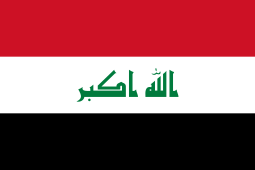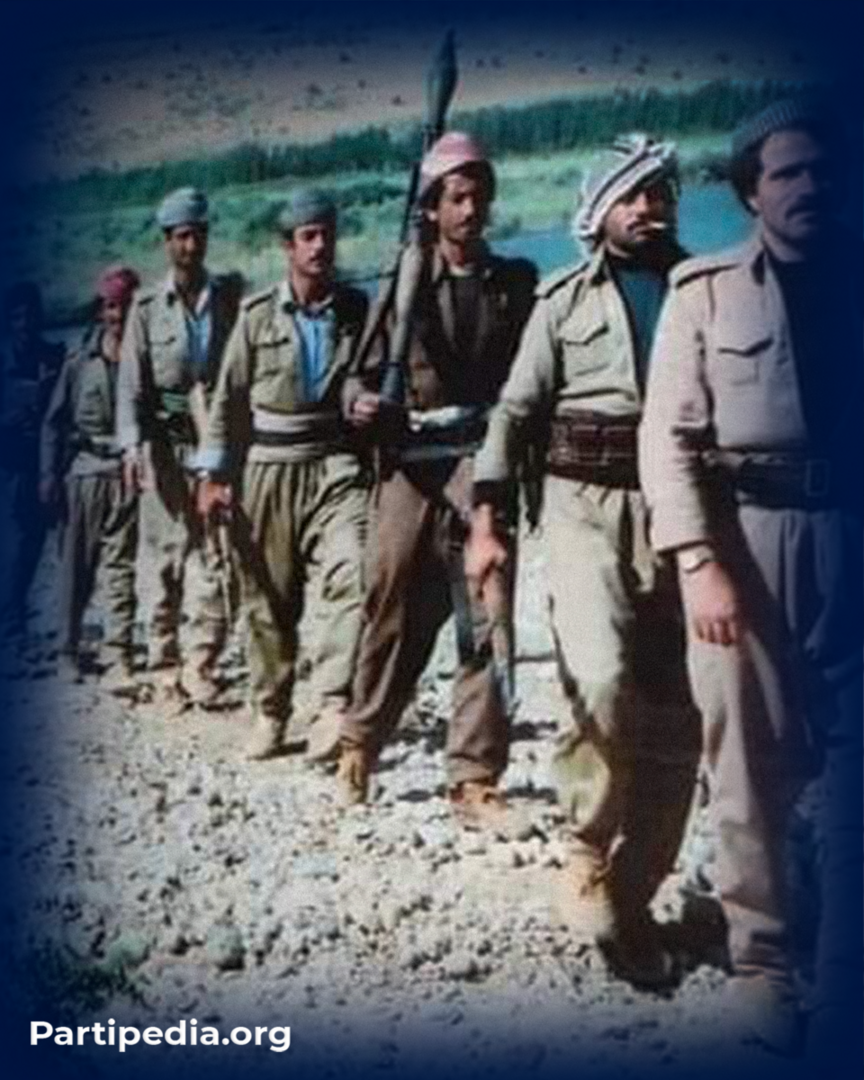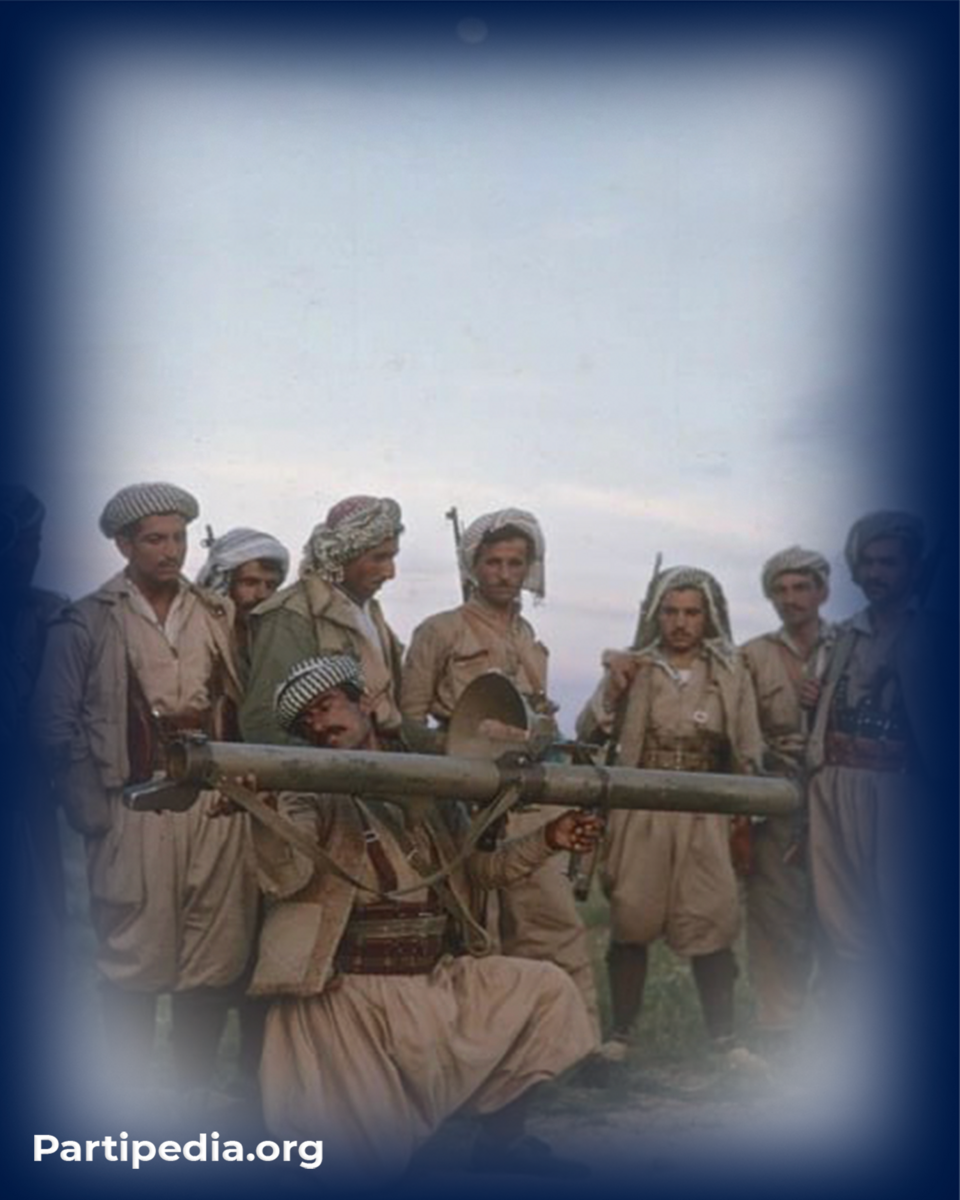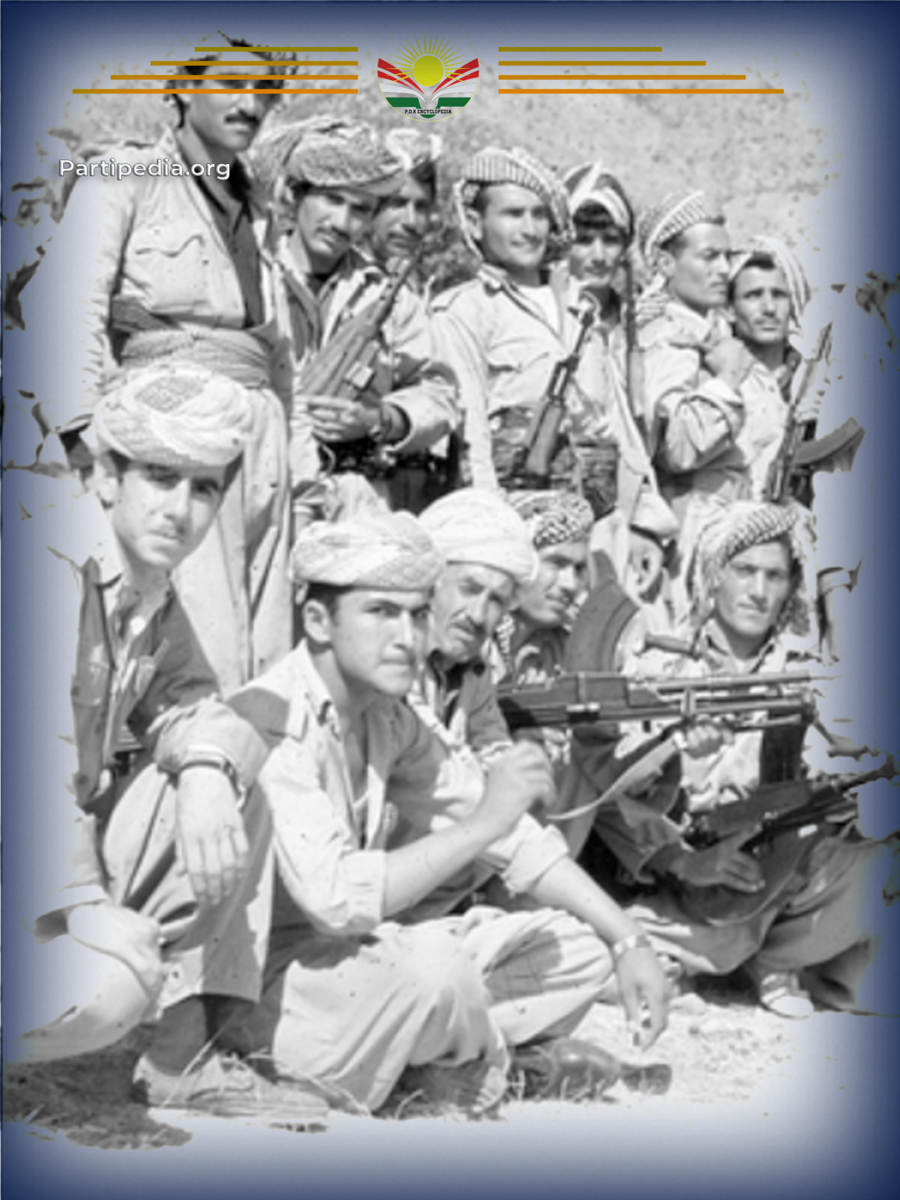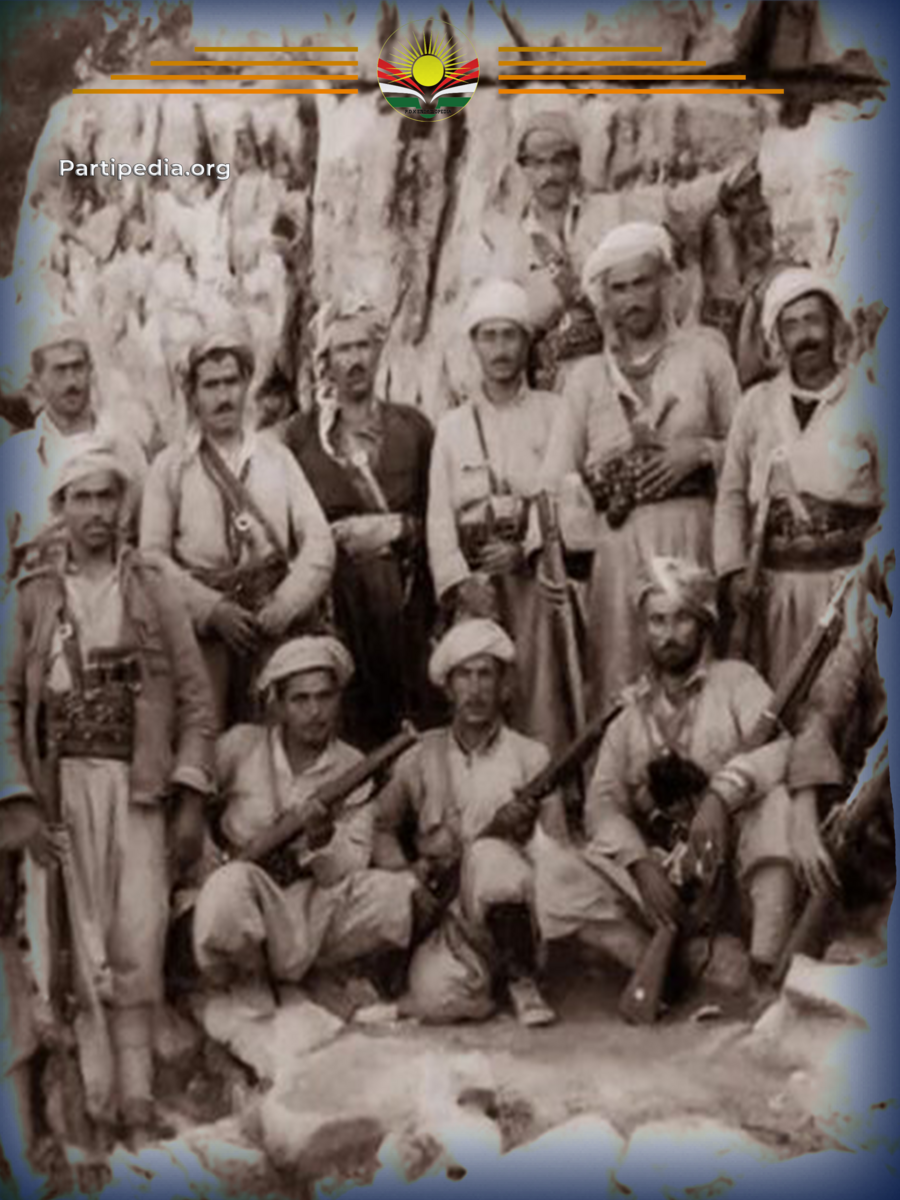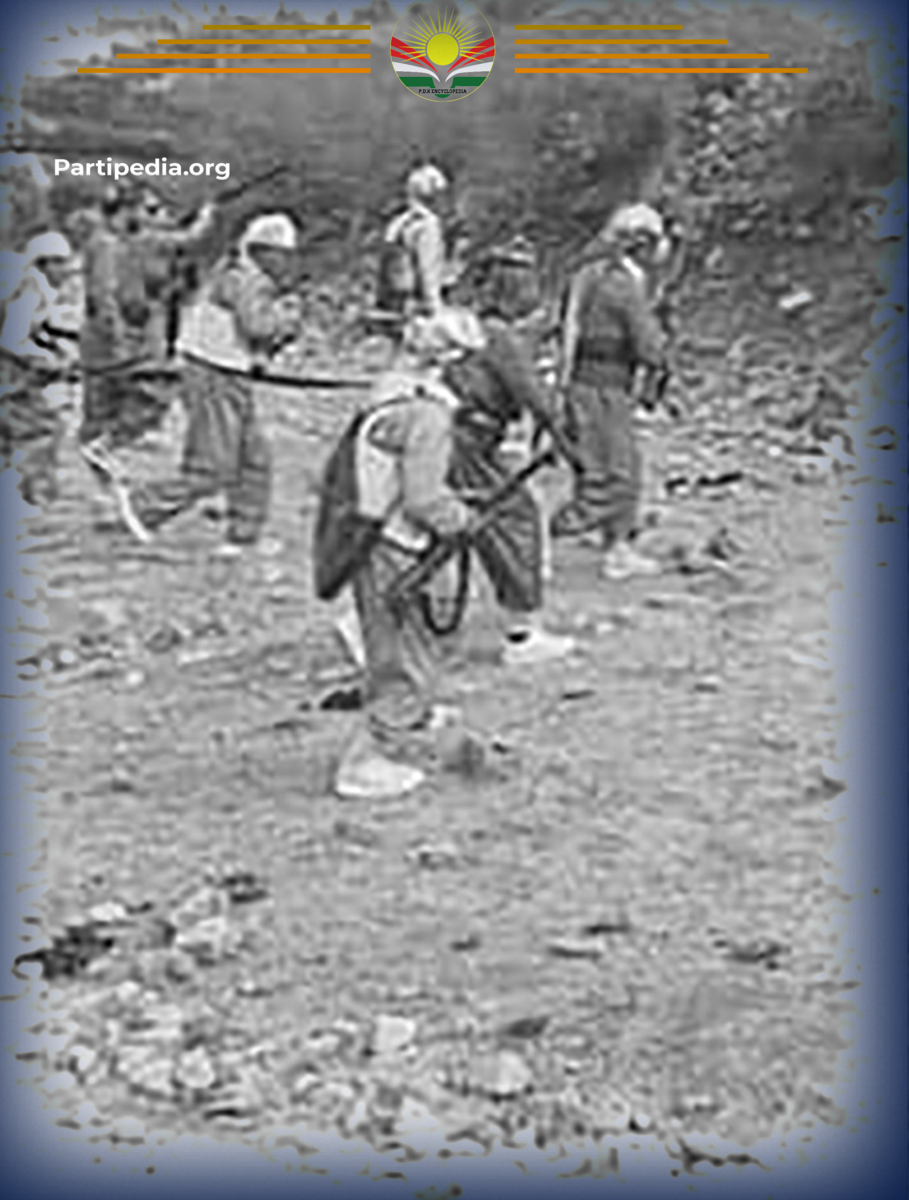In 1977, the headquarters of the Peshmerga of the Interim Leadership, located in Govke and Belmbir, were positioned close to each other in the Barwari Bala region. Govke headquarters housed numerous Peshmergas, including Haji Qado's detachment, along with detachments led by Mohammed Khalid Bosali and Mohammed Gawda, totaling more than 100 Peshmergas. In contrast, Belmbir headquarters was solely occupied by Ahmed Shana's detachment. On May 25, 1977, a large force of 500 officers and soldiers, supported by nine passenger helicopters and silent fighters, launched an attack on Belmbir headquarters from three fronts: east, west, and south. This was the first time that new helicopters, purchased from France, were used by the army against the Peshmerga.
Upon hearing the gunfire from Govke headquarters, Haji Qado, Mohammed Khalid, and Mohammed Gawda, accompanied by about sixty Peshmergas, rushed to assist their comrades. However, on their way, they were attacked by aircraft, and near the headquarters of Ahmed Shana, Haji Qado's cousin, Hassan Hajar, a detachment commander, along with another Peshmerga, were shot dead by helicopters. Additionally, Mirkhan, Shamo, and three other Peshmergas from Haji Qado's detachment were wounded. The planes, which would land to carry the bodies of their dead, including those of the martyred Peshmergas, dared to land less frequently after the Peshmerga forces used their RPG, which had only three bullets. When Haji Qado, Mohammed Khalid, and Mohammed Gawda’s forces arrived, Ahmed Shana and many of his Peshmergas had run out of ammunition but continued to defend their position. With the arrival of reinforcements, the Peshmerga forces shifted from defense to offense, killing a large number of army soldiers and forcing the army to retreat. The planes took the wounded and fallen soldiers, including Zorab and another martyred Peshmerga, from the battlefield, along with Rasul Doski, a captured Peshmerga, whom they later threw from the plane while still alive, resulting in his martyrdom.
The battle left eight Peshmergas and two new recruits martyred, along with four civilians. Nine Peshmergas, including Salih Sito and Ahmed Shana, were wounded, while Ali Hruri, a Peshmerga under Ahmed Shana, was shot multiple times and martyred. Zoran Abdulaziz (Anwar) also became a martyr on the same day. The regime army suffered over 45 to 50 fatalities. The bodies of the martyrs were transported to Arooshe village by Haji Qado, Mullazm Mohammed Sorani, Mohammed Khalid, Mohammed Gawda, and the Peshmergas, where they were buried before returning to Govke headquarters. The following day, Haji Qado decided to return to Belmbir headquarters with four Peshmergas to recover the weapons. After gathering the weapons and loading them, they planned to have lunch and then return to the Valley of Martyrs. On May 26, four Smti helicopters appeared at Belmbir headquarters, where Haji Qado and his Peshmergas were stationed. The helicopters approached unexpectedly from behind the valley, catching the Peshmergas unprepared for defense. The airstrikes resulted in the immediate martyrdom of Haji Qado.
The next day, May 27, 1977, the regime army arrived at Govke headquarters, deploying seven passenger planes. After landing, they launched a massive assault on the Peshmerga forces. Despite the loss of their leader and several brave Peshmergas the previous day, the Peshmerga forces defended their position heroically, successfully repelling the attack and forcing the army to retreat. Following the battle, several other units were deployed to the Martyrs Valley and Govke headquarters to guard the site and the graves of the martyrs. These units had received intelligence that the regime intended to return to the area by plane to retrieve the bodies. The detachments remained in the area for forty days to ensure the army would not return for this purpose.
Source:
1.kdp Encyclopedia Archive.

